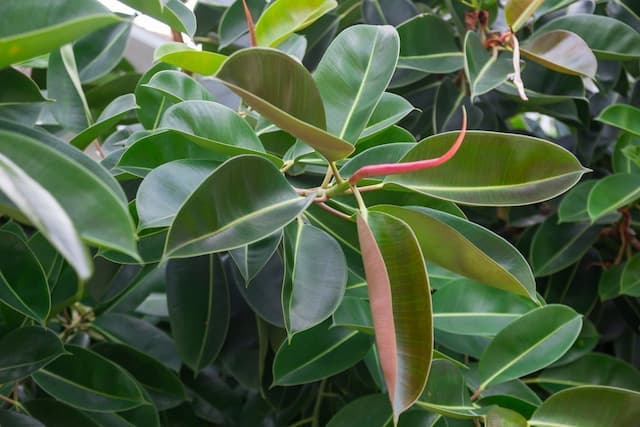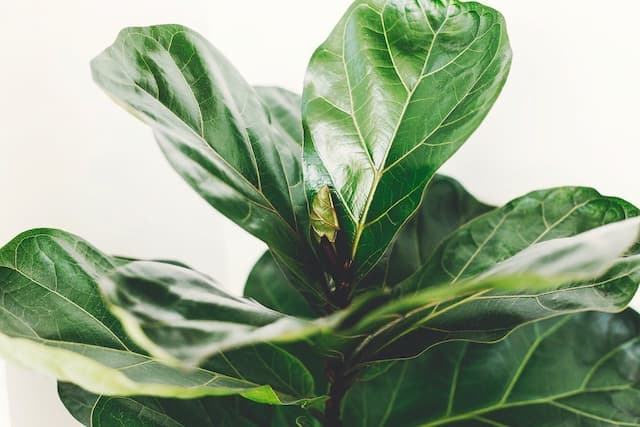Weeping fig Ficus benjamina



ABOUT
Ficus benjamina, also known as the Weeping Fig or Benjamin Fig, is an attractive plant with shiny, dark green leaves and a graceful, upright growth habit. As an indoor plant, it can reach a height of 6 - 10 feet and a width of 3 - 6 feet, depending on the size of the pot and the amount of light it receives
When grown outdoors in a warm, humid climate, Ficus benjamina can reach heights of up to 50 feet and spreads through underground runners. The leaves of an outdoor Ficus benjamina plant are typically larger than those of an indoor plant, and the plant may produce small, yellow flowers and edible fruit by humans and animals in tropical regions where it is native.
It is important to note that some Ficus species, including Ficus benjamina, produce a milky sap that can be irritating to the skin and mucous membranes.
About this plant
 Names
NamesFamily
Moraceae
Synonyms
Weeping fig, Golden fig, Java fig, Java tree, Fico-chorao, Tropic-laurel, Chinese banya, Small-leaved rubber plant, Waringin, Benjamin fig, Ficus tree
Common names
Ficus nitida
 Toxicity
ToxicityTo humans
The plant produce a milky sap that can be irritating to the skin and mucous membranes, and some people may experience an allergic reaction to the sap. In addition, the leaves and stems of the plant contain toxins (proteolytic enzyme, psoralen) that can cause digestive upset if ingested.
If you experience any symptoms such as skin irritation, redness, or swelling, or if you experience difficulty breathing or swallowing, you should seek medical attention immediately.To pets
Weeping Fig can be toxic to animals if ingested. The leaves and stems of the plant contain toxins (proteolytic enzyme, psoralen) that can cause digestive upset, including vomiting and diarrhea, in animals. In severe cases, ingestion of the plant may cause more serious symptoms such as tremors, difficulty breathing, and changes in urine production.
If you suspect that your pet has ingested any part of a Ficus benjamina plant, you should contact your veterinarian immediately.
 Characteristics
CharacteristicsLife cycle
Perennials
Foliage type
Evergreen
Color of leaves
Dark green
Flower color
Yellow
Height
Up to 50 feet
Plant type
Tree
Hardiness zones
9
Native area
Asia and Australia
Benefits
 General Benefits
General BenefitsFicus benjamina is effective at purifying the air by removing pollutants;
Release moisture into the air through a process called transpiration, which can help to increase the humidity in a room and improve indoor air quality;
Attractive plant with glossy, dark green leaves;
Relatively easy to care for. Medical Properties
Medical PropertiesWeeping fig has been used in traditional medicine in some parts of the world. It has been shown to have antioxidant, anti-inflammatory, antifungal, and antibacterial properties.
However, it is important to note that there is limited scientific evidence to support the use of Ficus benjamina for medicinal purposes, and the plant should not be used as a substitute for proven medical treatments.
If you are considering using Ficus benjamina for medicinal purposes, it is important to consult a qualified healthcare provider for advice and guidance. Air-purifying Qualities
Air-purifying QualitiesWeeping fig is effective at purifying the air by removing pollutants such as formaldehyde, benzene, and trichloroethylene from the air. This ability to purify the air makes Ficus benjamina a popular choice for indoor plants, as it can help to improve the quality of the air inside homes and offices.
This plant participated in the NASA Clean Air Study. Other Uses
Other UsesFicus benjamina is widely cultivated as an ornamental plant for its attractive leaves and graceful growth habit;
It is commonly used as a bonsai plant due to its ability to tolerate pruning and shaping and its attractive, small-leaved growth habit;
In some tropical regions where Ficus benjamina is native, the fruit of the plant is eaten fresh or used in cooking. The fruit is high in fiber and is sometimes used to make jam or other preserves;
In some parts of the world, the wood of Ficus benjamina is used for furniture, flooring, and other wood products.
Interesting Facts
 Feng Shui
Feng ShuiIn feng shui, Ficus benjamina is thought to be particularly auspicious because it is believed to bring prosperity and good luck.
Placing a Ficus benjamina plant in a window or near a doorway can help to create a sense of enclosure and protect the home or office from negative energy. Zodiac Sign Compitability
Zodiac Sign CompitabilityThere is no particular astrological association with Ficus benjamina therefore considered to be compatible with all signs.
Ficus benjamina is a popular and easy-to-care-for plant that is grown for its attractive foliage and graceful, upright growth habit, and can be enjoyed by people of all zodiac signs.
 Water
WaterProper watering is important for the health and vitality of a Ficus benjamina plant.
Water your Ficus benjamina regularly, but be careful not to over-water it. Allow the soil to dry out slightly between waterings, and then water the plant thoroughly until the water drains out of the bottom of the pot.
In summer:
Ficus benjamina should be watered once or twice a week, depending on the size of the pot and the moisture level of the soil.
In winter:
During the winter months, Ficus benjamina plants will likely need to be watered less frequently. Ficus benjamina should be watered once a week or less. Light
LightFicus benjamina is a popular indoor plant that is known for its ability to tolerate low light levels. However, the plant does best when it receives bright, indirect light, and it may struggle if it is placed in a location that receives little or no natural light.
It is best to place the plant near a window that faces east or west. Avoid placing the plant in a location where it will receive direct sunlight, as this can cause the leaves to yellow and scorch. Temperature
TemperatureFicus benjamina is a tropical plant that is adapted to grow in warm, humid climates. In general, Weeping fig a plants prefer temperatures between 70 - 90 °F.
During the winter months, the plant prefer temperatures between 60 - 75 °F. It is important to protect the plant from cold temperatures, as Ficus benjamina is sensitive to frost and can be damaged if exposed to temperatures below 50 °F. If your plant has started to lose its leaves, it may be cold and need a different location. Pruning
PruningPruning is generally not necessary for Ficus benjamina as they tend to grow naturally. However, if the plant becomes too large or overgrown, it may be necessary to prune it to maintain its size and shape. Prune the plant in the spring or early summer, when the plant is actively growing.
 Cleaning
CleaningEvery few weeks
 Soil
SoilFicus benjamina plants prefer a slightly acidic soil with a pH range of 6.0 to 6.5.
To create the best soil mixture for a Ficus benjamina plant, you can start with a well-draining potting mix that is specifically formulated for indoor plants. You can then add a small amount of perlite or coarse sand to the mix to improve drainage.
In addition to the potting mix, you can also add a small amount of compost or well-rotted manure to the soil to provide additional nutrients for the plant. Repotting
RepottingIt is generally best to transplant a Ficus benjamina plant in the spring or early summer, when the plant is actively growing.
Transplant Ficus benjamina every 2 - 3 years, or when the plant becomes pot-bound and outgrows its current pot.
A new pot needs to be slightly larger than the current pot and needs to have drainage holes. Humidity & Misting
Humidity & MistingFicus benjamina plants prefer a humidity level of around 50-70%.
To maintain the appropriate humidity level for your Ficus benjamina plant, you can place a humidity tray under the plant, filled with pebbles and water, mist the leaves of the plant, put a humidifier next to the plant. Suitable locations
Suitable locationsIndoor
All year round
Outdoor
Ficus benjamina plants can be grown outdoors in warmer climates, such as in USDA hardiness zones 10 and 11.
To grow Ficus benjamina outdoors, choose a location that receives bright, indirect light and has well-draining soil. If the plant is exposed to temperatures below 50 °F, it may become damaged or die.Hardiness zone
10 - 11 USDA
 Life cycle
Life cycleFicus benjamina plants do not typically produce showy flowers, as they are self-pollinating and do not rely on insects or animals for pollination. Instead, Ficus benjamina plants produce small, inconspicuous flowers that are typically hidden among the foliage.
 Propogation
PropogationPropogation time
Spring - early summer
By CUTTINGS:
Choose a healthy stem with at least 2-3 leaves and cut it off just below a leaf node using clean, sharp pruning shears;
Remove any lower leaves from the stem cutting, leaving just the top 2-3 leaves intact;
Place the cutting in a container of water and wait for roots to form, which can take anywhere from a few weeks to several months;
Once the roots are at least 1-2 inches long, you can transplant the cutting into a pot filled with a well-draining potting mix.
 Pests
PestsSpider mite, Scale insects, Mealybug
 Diseases
DiseasesRoot Rot, Powdery mildew




